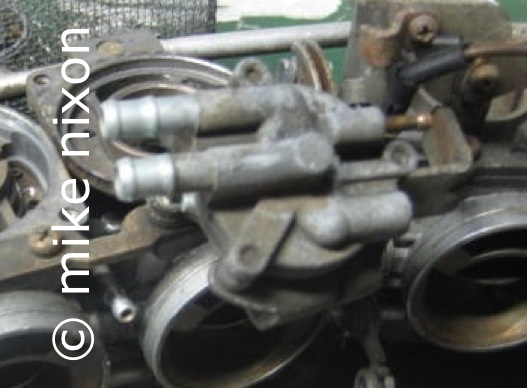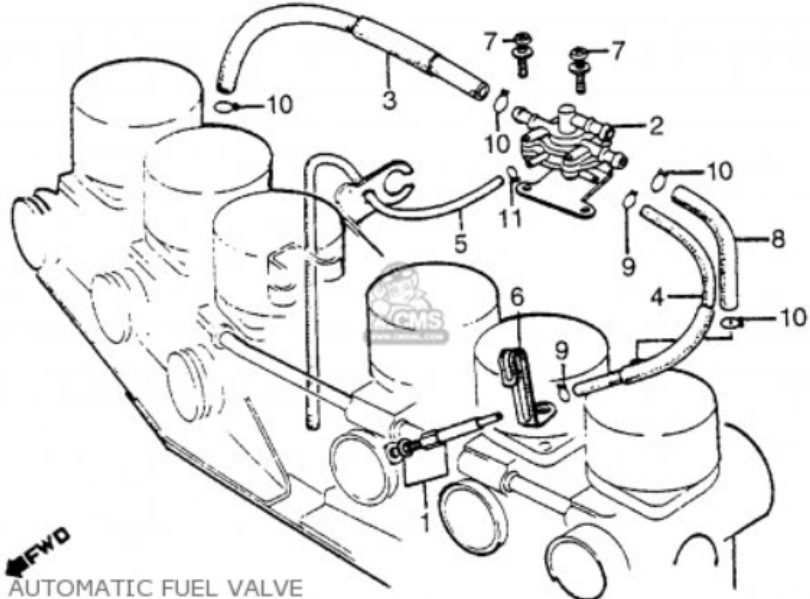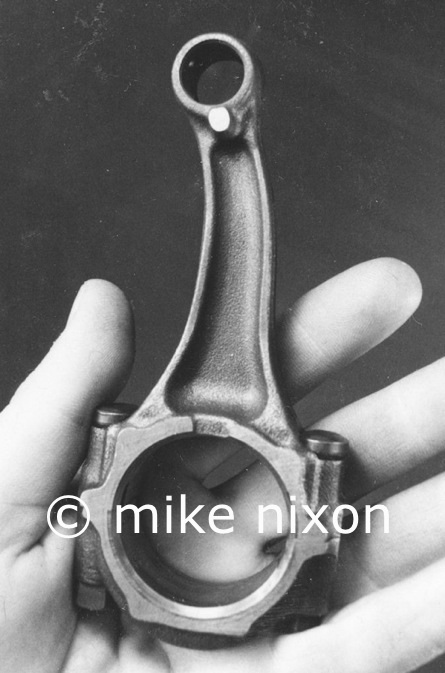  ® ®
|
The CBX's Vacuum Fuel ("Auto") Valve |
|
The vacuum-operated fuel valve is ubiquitous on late carbureted powersports vehicles. However, Honda products were somewhat unique in that unlike Yamaha, Kawasaki and Suzuki, no U.S. model Honda carried an "auto fuel" valve until the 1980 model CBX. The reason it appeared was in fact the inaugural 1978/1979 CBX's tendancy toward cylinder hydrolock and subsequent connecting rod bend. This was caused by the early model's 6-1 float bowl overflow hose system that encouraged capillary action generated overfill of the number one cylinder. The 80 and later CBX bowl overflow hoses were changed to a 6-2 system and also the auto valves fitted as added insurance. An accessory (Hondaline) valve was also made available for 79 model owners. This accessory valve seems to have also been fitted before sale by some Euro importers.
Like some other bikes the CBX is known to be hard starting at times. Specifically, after sitting for a week to 10 days. This is because the float bowls are wide but shallow, and well vented to atmosphere, and coupled with a hot runnning engine (including an extremely high head temp), this adds up to rapid fuel evaporation over a very short period of time. I have witnessed CBX float bowls evaporating half their volume in just a couple hours. Thus the bowls have to refill each time the bike is started if sitting for very long. Some owners have resorted to removing the 80 and later auto valve and this does in fact shorten the refill time. But there still is that refill need, and nothing is going to overcome it completely. Some have resorted to using outboard engine squeeze bulbs, some even electric fuel pumps. There are unfortunately some additional reasons for CBX hard starting, such as a poorly designed choke linkage that tends to hang open, typical lack of ignition system maintenance, low cylinder compression, very fast fuel gelling, and not the least, a carburetor design that does not use a dedicated start circuit the way many other carbs do, but instead relies on the idle jet for starting fuel discharge, a circuit that is the smallest in the carburetor, making its discharge feeble and easily overcome by varying conditions.
All this to say that there is no complete solution to hard starting on the CBX. My guarantee to my CBX carb customers is that short of that 7-10 day non-use limit, your engine will start easily every time, and keep doing so. After 10 days, the conditions already described will lengthen the start scenario progressively with longer periods of vehicle disuse. And should the bike actually be stored, stretching into weeks, the starting will of course get harder yet, as now the fuel is not only evaporating, but also beginning to gel in the tiny idle jets (making them effectively smaller), and remember it is the idle jets that the bike starts on. Use a fuel stabilizer or race gas to slow fuel gelling and all but eliminate this last scenario.
A connecting rod from a Honda CBX. I have a collection of these. Any engine work needs to include inspecting the rods for this problem.
As for defeating the auto valve in order to enhance cold starts, there are many ways to do this. Simply removing the valve and adding a tee fitting is what many do. Others modify the valve itself, and there are a couple ways to do this. In any case, care should be taken. The manual tank-mounted petcock should be turned to the "off" position each time the bike is parked, for insurance against hydrolock. For more protection, remove your 1978/1979 model bowl overflow hoses, or fit individual hoses, or fit the later 6-2 hose system, or put no hoses at all, my preference.
Starting is optimized on the CBX by making sure the idle jets are clean and to proper size (this really requires removal), by ensuring that the choke system (and its fast idle counterpart) works properly, by remembering that the float bowl fuel levels go down astonishingly fast, by making sure the engine has adequate cylinder compression and well-maintained ignition system components, and by using a fuel stabilizer such as Sta-Bil full-time.
|
|
Recommended reading: The CBX Hydrolock Issue |
|
Email me © 1996-2022 Mike Nixon |


